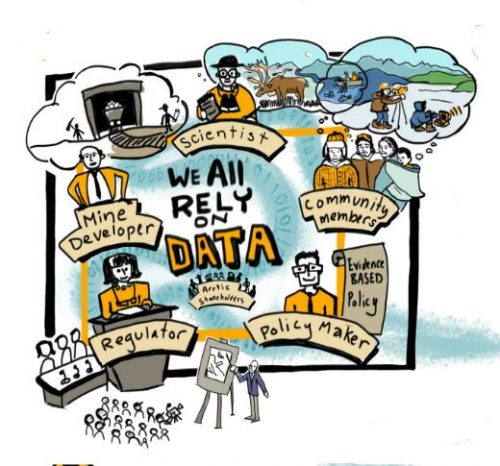
 The Canadian Geospatial Data Infrastructure (CGDI) is an initiative of Natural Resources Canada that began in 2001. The CGDI does not refer to a specific database, but rather a collection of Canadian geospatial resources available online. The CGDI was created to give all users in Canada easy access to Canadian geospatial data from a variety of sources.
The Canadian Geospatial Data Infrastructure (CGDI) is an initiative of Natural Resources Canada that began in 2001. The CGDI does not refer to a specific database, but rather a collection of Canadian geospatial resources available online. The CGDI was created to give all users in Canada easy access to Canadian geospatial data from a variety of sources.
Easy access to geospatial data is intended to allow for effective decision-making related to economic, environmental, and social priorities within government organizations, the private sector, NGOs, and academia. Since its inception, the CGDI has been guided by a set of principles that require data to be open, accessible, and relevant to the geospatial community’s needs. Over the years, increasing innovation in the Canadian geospatial sector became a key component of the initiative as the CGDI began to address compatibility of data.
CGDI Components
There are four main components to the CGDI: framework data, policies, standards, and technologies.
The framework data component refers to up to date spatial data for all of Canada. This data mainly includes base mapping layers required for most applications. The data is free and can be accessed through the GeoBase portal (www.geobase.ca).
Policies and standards are included as part of the CGDI to improve data access and quality, and to allow for compatibility of geospatial data and applications between different systems and organizations.
Technologies include innovative tools that enable the development of applications and systems that use spatial information.
GeoConnections
Development of the CGDI is led by GeoConnections, another Natural Resources Canada initiative that focuses on standards and policies for Canadian geospatial data. GeoConnections began in 1999 and resulted in the creation of the CGDI in 2001.
Policies created as part of GeoConnections address data access, quality, ownership, and integrity, with the aim to eliminate barriers and allow efficient exchange of geospatial information. Policies focus on the collection, management, circulation, and use of geospatial data. Privacy and licensing of data are also addressed as part of the polices, addressing data exchange barriers that result from data licensing issues.
Standards created as part of GeoConnections focus on the content and structure of data. The GeoConnections standards allow software developers to build applications that create products or services that are technically compatible. The standards aim to increase the efficiency of data sharing and reduce costs normally associated with data transfer between incompatible systems.
A Brief History
Since the GeoConnections initiative was started in 1999, GeoConnections and the CGDI have gone through multiple phases of development.
From 1999 to 2005, the focus was on establishing and building the CGDI. The main goals were to develop the technology and establish standards that would make the framework data component of the CGDI easily accessible.
From 2005 to 2010, the focus was on evolving and expanding the CGDI. During this phase decision-support tools were created for decision makers in four priority areas: public health, public safety and security, Aboriginal matters, and the environment and sustainable development.
From 2010 to 2015, the focus was on integrating and sustaining the CGDI. This third phase involved tying together the different parts of the CGDI and sustaining the CGDI by creating policies and standards that allowed creators of geospatial data to understand the importance of interoperable data and applications. Currently, interoperability of data is achieved through partnerships between all levels of government, the private sector, and academia, and by combining all four components of the CGDI. The Canadian GeoSecretariat, a division of GeoConnections, brings together all the stakeholders of geospatial data in Canada and works to allow these groups to collaborate and build components of the CGDI.
Current CGDI Initiatives
As of 2013, Natural Resources Canada was leading seven initiatives as part of the CGDI. One of these initiatives is the National Imagery Service project. This project involves working with multiple organizations to develop a strategy for creating an online National Imagery Service with large amounts of imagery data from participating organizations. Another initiative is the Open Licensing Project, which involves providing Canadian data users and providers with the legal tools and knowledge required to share and use data with varying licenses.
As of earlier this year, GeoConnections was accepting invitations for future projects that would contribute to innovation within the CGDI, with regards to urban environments and Canada’s Arctic (the invitation for new projects closed in October).




Be the first to comment